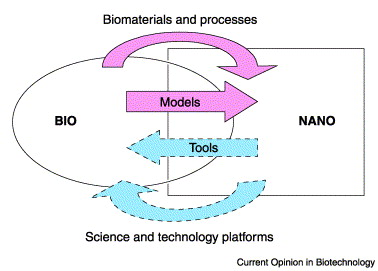Introduction:
The field of biotechnology has made significant contributions to healthcare, agriculture, and the environment. Advances in genetic engineering, bioprocessing, and other biotech fields have led to the development of new products, such as genetically modified crops, recombinant proteins, and vaccines. Similarly, nanotechnology has brought about advances in materials science, electronics, and energy, with the development of nanomaterials, nanoelectronics, and nanomachines.
However, the intersection of biotechnology and nanotechnology has the potential to revolutionize many industries, from medicine to energy to electronics. In this blog post, we will explore the intersection of these two fields and its potential applications.
Medical Applications:
One of the most promising applications of the intersection of biotechnology and nanotechnology is in the field of medicine. Nanotechnology has the potential to improve drug delivery, increase the specificity of treatments, and enhance the imaging of diseases. For example, researchers are developing nanoscale drug delivery systems that can target cancer cells specifically, minimizing side effects associated with traditional chemotherapy. Similarly, nanoparticles can be used to enhance the contrast of medical imaging, making it easier to detect and diagnose diseases.
Biotechnology and nanotechnology also have the potential to revolutionize regenerative medicine. Researchers are using nanomaterials to develop scaffolds that can support the growth of new tissues and organs. These scaffolds can be seeded with stem cells or other cell types, leading to the growth of functional tissues and organs.
Energy Applications:
Another area where the intersection of biotechnology and nanotechnology has the potential to make a significant impact is in the field of energy. Researchers are exploring the use of nanomaterials to improve the efficiency of solar cells, to develop new battery technologies, and to create more efficient lighting. Similarly, biotechnology can be used to produce biofuels, such as ethanol and biodiesel, from renewable sources.
Electronics Applications:
The intersection of biotechnology and nanotechnology also has the potential to revolutionize the field of electronics. Researchers are exploring the use of nanoelectronics, such as carbon nanotubes, to create smaller and more efficient devices. Similarly, biotechnology can be used to create new materials with unique electrical properties, such as conductive proteins and DNA.
Social and Ethical Implications:
As with any emerging technology, the intersection of biotechnology and nanotechnology raises important social and ethical issues. For example, the development of new medical treatments and technologies raises questions about access and affordability. Similarly, the use of nanotechnology in food and consumer products raises questions about safety and regulation.
Conclusion:
The intersection of biotechnology and nanotechnology has the potential to revolutionize many industries, from medicine to energy to electronics. However, as with any emerging technology, it is important to consider the social and ethical implications of these advances. By balancing the benefits of these new technologies with the potential risks, we can ensure that the intersection of biotechnology and nanotechnology is used to benefit society as a whole.


